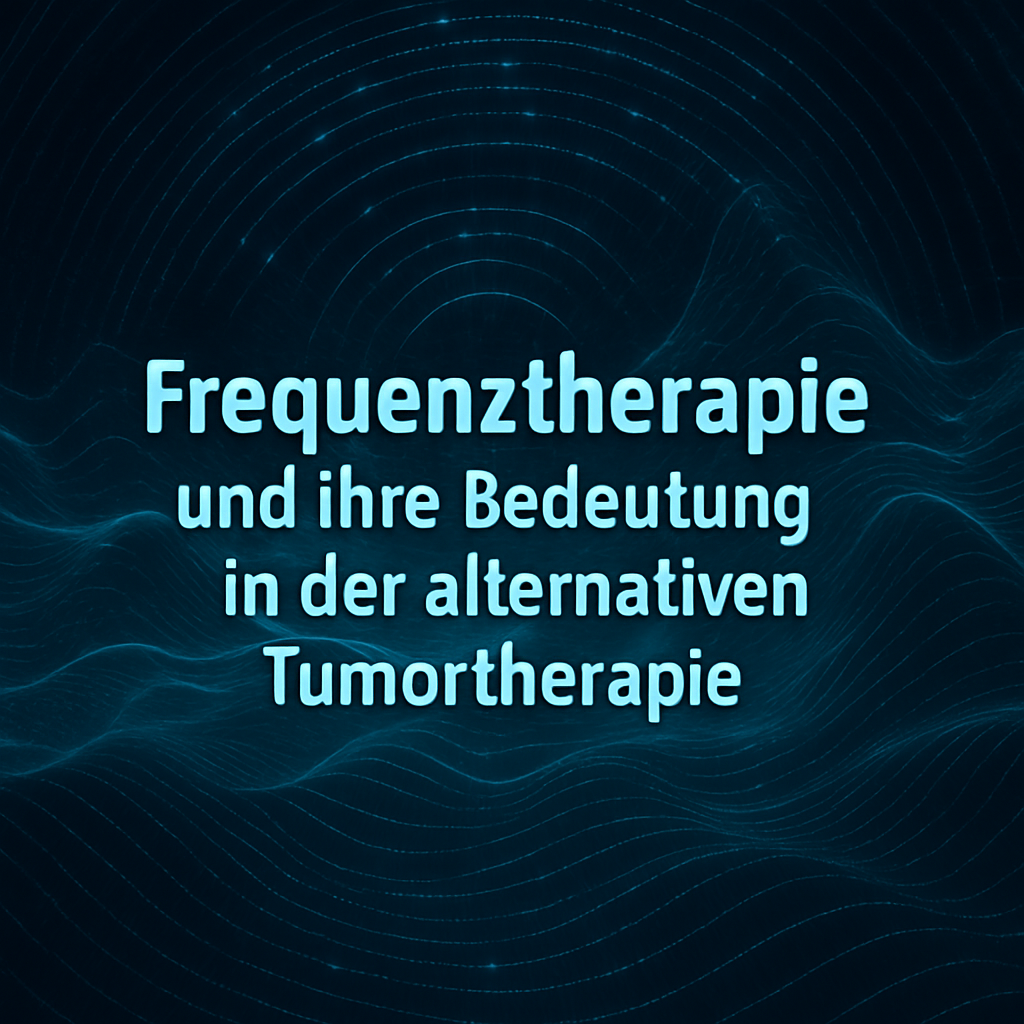
Frequency therapy and its significance in alternative tumour therapy
Introduction: The search for gentle forms of therapy
Being diagnosed with cancer is a life-changing event for many people. While conventional medicine works with tried and tested procedures such as surgery, chemotherapy and radiotherapy, more and more patients are turning to complementary medicine. One form of therapy that is attracting increasing attention is frequency therapy - a method that works on an energetic level and offers new hope, particularly in alternative tumour therapy.
What is frequency therapy?
Frequency therapy is based on the assumption that every cell, every organ and every pathogen has its own specific frequency. These electromagnetic oscillations can be measured and influenced by targeted impulses. The aim is to identify pathological frequency patterns and harmonise them using therapeutic frequencies.
The best-known methods include:
- Bioresonance therapy
- Vital field therapy
- Rife frequency therapy
- MORA therapy
Frequency therapy is a regulative method that does not intervene in the biochemical metabolism, but sets impulses on a subtle level.
Frequency therapy in alternative tumour therapy
In integrative oncology, frequency therapy is increasingly being used as a supportive measure in the treatment of cancer patients. It does not replace conventional medical therapy, but can help to alleviate side effects, strengthen the immune system and improve quality of life.
Areas of application:
- Accompanying chemotherapy: reduction of nausea, fatigue and nerve damage
- Pain relief: frequency therapy can modulate chronic pain
- Regeneration and cell protection: support for the body's own repair mechanisms
- Psycho-emotional stabilisation: help with anxiety, sleep disorders and depressive moods
Individualised therapy approaches
Modern frequency devices, such as those used in vital field therapy, analyse the patient's individual frequency patterns and create a personalised therapy programme based on them. This makes the therapy highly individualised and precise, which can be particularly beneficial for chronic diseases such as cancer.
Scientific background and study situation
Frequency therapy is not currently recognised by conventional medicine. Nevertheless, there are interesting studies and field reports that indicate an effect. Preclinical studies show that certain frequencies can influence the growth of tumour cells, while healthy cells remain unaffected.
Some clinics and alternative cancer centres around the world are already integrating frequency-based procedures into their therapy programmes. However, research is still in its infancy and more scientific evidence is needed for widespread acceptance.
Benefits of frequency therapy for cancer patients
| Benefit | Advantage Description |
|---|---|
| Low side effects | No toxic substances or invasive procedures |
| Holistic | Involves body, mind and energetic field |
| Individually customisable | Personalised programmes according to needs |
| Can be used as an adjunct | Can be combined with conventional medical procedures |
| Strengthening self-healing | Activation of the body's own regulatory processes |
Conclusion: A gentle impulse in cancer therapy
Frequency therapy offers interesting prospects for gentle, complementary support for cancer. It works on an energetic-informative level and can help to bring the organism into a better balance. While scientific recognition is still pending, many users report an improved quality of life and inner stability.
Alternative tumour therapy is not a replacement, but an extension of existing methods - and it is precisely in this context that frequency therapy unfolds its potential.
